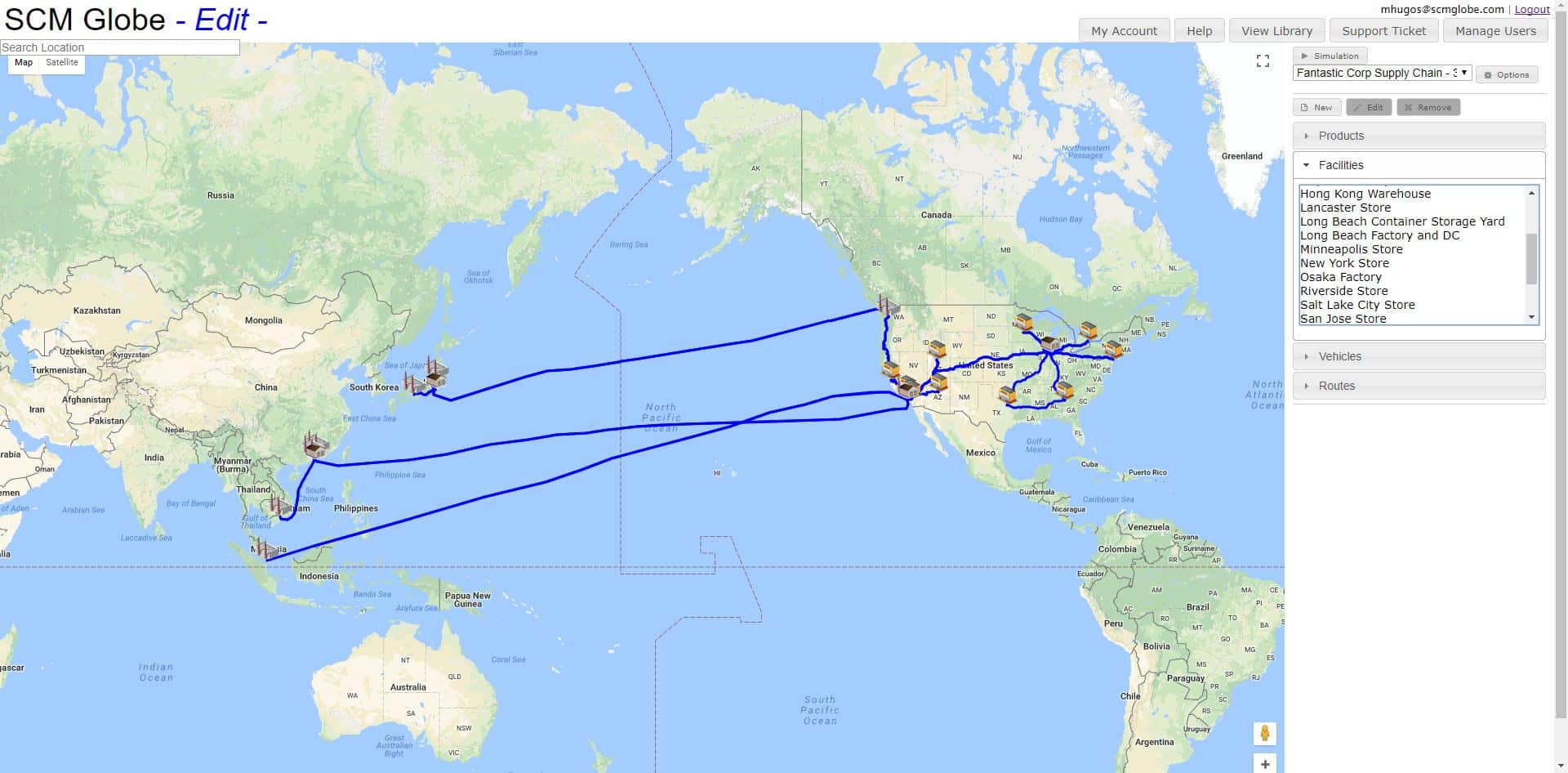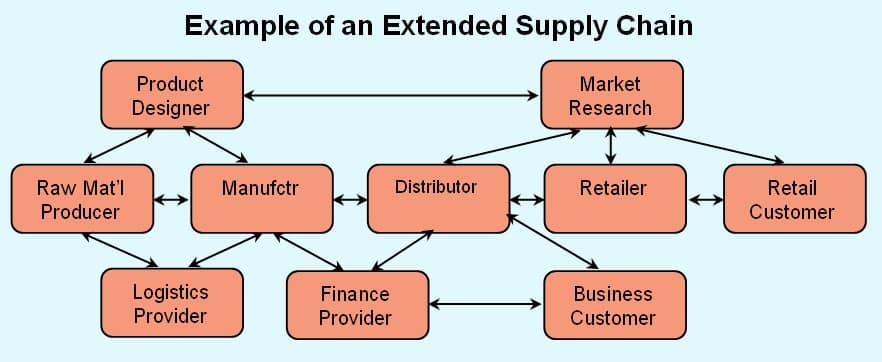There are four kinds of participants in every supply chain. They perform the activities that make a supply chain work and provide a reason for it to exist. These participants are: 1) producers; 2) distributors or wholesalers; 3) retailers; and 4) customers or consumers. Supplying customers demand for products and services is the reason for supply chains to exist.
Supply Chains are Combinations of Organizations
In its simplest form, a supply chain is composed of a company and its suppliers and customers. Combinations of these three – supplier, company, customer – create a simple supply chain. Extended supply chains contain an additional kind of organization called a service provider (as illustrated below).
In extended supply chains there is the supplier’s supplier, or ultimate supplier at one end, and the customer’s customer, or ultimate customer at the other end. And there are service providers that assist other participants in the supply chain. They provide services in areas such as: logistics; finance; marketing; forecasting; and information technology to name just a few. These organizations in an extended supply chain belong to one or more of the four kinds of participants in any supply chain:
1) Producers
Producers (manufacturers or service providers) are organizations that make products or services. This includes companies that are producers of raw materials and companies that are producers of finished goods. Producers of raw materials are organizations that mine for minerals, drill for oil and gas, and cut timber. It also includes organizations that farm the land, raise animals, or catch seafood. Producers of finished goods use the raw materials and sub-assemblies made by other producers to create their products. Service providers are producers of services, and manufacturers are producers of products. Some producers are also consumers or customers of products made by other producers. Producers supply the products and services used by other supply chain participants.
2) Distributors
Distributors (or wholesalers) are companies that take inventory in bulk from producers and deliver a bundle of related product lines to customers. They typically sell to other businesses and they sell products in larger quantities than an individual consumer would normally buy. Distributors buffer the producers from fluctuations in product demand by stocking inventory purchased from producers, and doing much of the sales work to find and service customer needs.
In addition to product promotion and sales, distributors also perform activities such as inventory management, warehouse operations, product movement, customer support and post sales service. A distributor can also be an organization that only brokers a product between the producer and the customer and never takes ownership of the product. As the needs of customers evolve, and the mix of available products changes, distributors continually track customer needs and match them with products to meet those needs.
3) Retailers
Retailers stock inventory and sell in smaller quantities to customers in the general public. Retailers closely track the preferences and demands of their customers. They advertise to their customers and use combinations of price, product selection, service, and convenience as their primary draw to attract customers. Discount stores attract customers using low price and wide product selection. Upscale stores offer a unique line of products and high levels of service. Retailers offer products and services to meet the demand of individual customers who buy in smaller quantities.
4) Customers
Customers (or consumers) are individuals or organizations that purchase and use a product or service. A customer may be an organization (a producer or distributor) that purchases a product in order to incorporate it into another product that they in turn sell to their customers (ultimate customers). Customers depend on producers, distributors, and retailers to meet their needs for products and services.
Service Providers
Service providers are producers of services that support the operation of supply chains by delivering a mix of services tailored to meet the particular needs of each supply chain participant. As the mix of supply chain participants evolves over time, the blend of service providers also evolves along with the services they offer. In some supply chains the needed services are provided by the producers, distributors, and retailers. In other supply chains services are provided by separate service provider companies.
Simulating these Supply Chain Participants
When you define your facilities select “Factory” for the producers in your supply chain; select “Warehouse” for the distributors; and select “Store” for the retailers. Model your customers by setting demand levels for products at the different stores. A model using these different facilities is shown in the screenshot below. By placing the facilities on a map and defining their operating characteristics plus the product delivery routes connecting them, you create an accurate model of any supply chain. Then simulations show you how well this supply chain works.

[We are glad to provide afree evaluation accountto instructors, students and supply chain professionals interested in exploring SCM Globe simulations — click here to request an account —Get Your Free Trial Demo]
Find good supply chain designs by simulating different combinations of these supply chain participants. You see how different combinations produce different operating results. Understanding the interactions between these different participants is central to designing new supply chains, and improving the operations of existing supply chains.
Run supply chain simulations with different forecasts of customer demand. Learn to manage the interactions between producers, distributors and retailers so as to meet customer demand at the lowest operating costs and lowest amounts of on-hand inventory across the supply chain. Using interactive simulations is a good way to explore options, and practice applying supply chain best practices to improve operating efficiencies.
As you figure out how to get the best results in SCM Globe simulations, you will also be learning techniques you can use to improve results in real supply chains.


